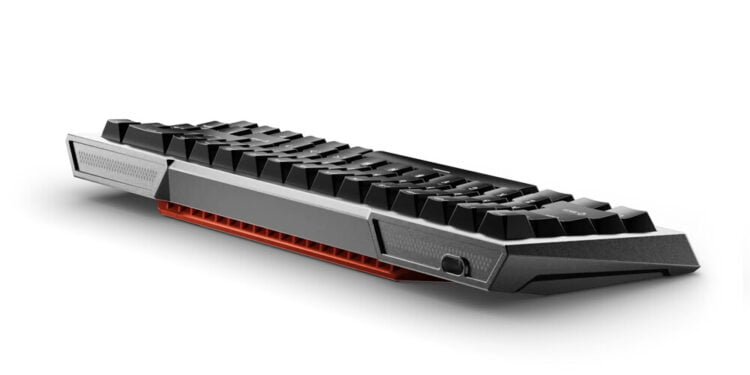Samsung’s Galaxy Watch 6 received a mostly modest upgrade from its predecessor, the Galaxy Watch 5.
In this year’s update, Samsung focused its efforts on expanding its wellness-centric features. These include enhanced personalized sleep coaching and insights, the ability to personalize heart rate zone training during running sessions, improved GPS tracking tailored for track runners, further customization in the workout app and the inclusion of irregular heart rate rhythm notifications, just to name a few. The caveat, of course, is that the Watch 6’s predecessors will have access to all these updates, dating back to the Watch 4.
Still, the Galaxy Watch 6’s modest improvements allow it to keep up with frontrunners in the field. For example, it can now stand shoulder-to-shoulder with Fitbit’s advanced sleep analysis features. The new heart health tools also give the watch the EKG monitoring prowess of Apple and Pixel smartwatches. Meanwhile, the improved run coaching brings it closer to watches offered by Garmin.
Design and battery life
The mechanical bezel-free edition of the Watch 6 is priced at $299 for the 40mm model, which comes in graphite and gold; the 43mm version, which also comes in silver, commands a slightly higher price of $329. It may lack the rotating bezel of the Classic, but it does have a digital bezel which allows you to scroll through your most-used widgets like Sleep, Workouts, and Weather without needing to poke around a menu.
With the Watch 6, Samsung also introduced a new design feature called One-Click, which makes it easier to swap bands with the literal click of a button for your ever-changing style needs. I personally am a huge fan of the graphite sports band and the flush circular face which gives the watch a sleeker feel.
The Watch 6 also boasts a more vibrant, higher-resolution display with peak brightness reaching 2,000 nits, up from the last model’s max of 1,000 nits. The screen is also 20 percent larger, making it easier to read text. The always on display (AOD) drained battery life of the Watch 5 pretty quickly when our Deputy Reviews Editor Cherlynn Low reviewed it, but I didn’t have similar issues wearing the Watch 6 all day.
The Galaxy Watch 6 comes equipped with a larger battery to support this year’s bigger and brighter display. Samsung claims the watch should run for up to 30 hours with the AOD on and up to 40 hours with it off. This is ideal for busy people who want the guarantee that the watch will work after an eight-hour workday before heading to the gym and again later, for sleep tracking. After using the watch for a day or two (mainly for workout tracking), I have been able to charge the watch to about 80 percent, or almost full, in under 30 minutes using the quick charge feature, adding at least another eight hours of battery life each time. However, battery life for any wearable tends to fluctuate depending on the extent of usage.
Health monitoring and tracking
The Watch 6 features an Irregular Heart Rhythm Notification (IHRN) feature, which is new for Samsung but has been around for years on competing devices. The FDA-backed IHRN tool detects EKG activity that is suggestive of atrial fibrillation (AFib), a condition that usually preempts stroke or heart failure. The feature, approved by the FDA, monitors a user’s heart activity continuously in the background. Because I don’t have AFib, there was no way to test this feature to see if it could accurately detect irregular heart activity. This, coupled with the traditional blood pressure monitoring, blood oxygen monitoring, body composition measuring tool, and EKG readings, add to Samsung’s overall pool of individualized health data tracking that can easily be accessed in reports on a paired Android phone and shared with a healthcare provider or family member.
The addition of the IHRN feature on the Watch 6 is in line with the company’s attempt to offer more useful cardiovascular insights to users.
Expanding its range of tracking features, Samsung built upon its existing menstrual cycle predictions tool introduced in the Watch 5. This includes the skin temperature reading and sensor technology from the last-gen model, which records measurements during sleep. This addition aids in monitoring your monthly period, ovulation cycle and fertility windows. For it to be useful, though, the tool needs consistent data input by a user so that its predictions get smarter.
Powered by Natural Cycles, a period tracking app, the new dedicated watch face makes it easy to input daily symptoms, which are not all necessarily tethered to a menstrual cycle. It can track everything from mood changes to physical conditions like cramping and bloating to logging sexual activity. All that data, in aggregate, can help Samsung’s app predict when a period will start and end, fertility windows, and when ovulation is expected to kick in.

The new watch also comes with a fall detection feature that has a built-in SOS tool that shares a user’s location with an emergency service line or emergency contact of your choosing when a hard fall is detected. You have to manually set up this feature and select when the watch should detect falls – it can be on all the time, during workouts, or quote, “during any activity, or movements not registered as exercise.” Once a fall is detected, Samsung says the device can take up to 30 seconds to recognize a fall, but the waiting period can be customized to as little as 10 seconds.
Medical information and conditions unique to a user’s health history can be plugged into the interface on the paired device. This might be especially useful for elderly populations or people who are medically at a fall risk (think post-surgical or highly medicated patients). However, during testing, after falling on different surfaces, and staying stationary for at least 30 seconds each time, I was never able to trigger the alert system. Samsung claims that after a fall, a watch should alert a user for 30 seconds with a popup, sound, and vibration. This delay is supposed to give a user time to get up or cancel the action of alerting emergency services. To be fair, this was also difficult to trigger on the competing Apple Watch Series 8.
Customizable fitness regimens
Making a unique workout plan with key metrics and goals in mind is nothing new for an avid fitness junkie. Since the launch of the Galaxy Watch 4, Samsung has made it a point to expand its workout trackers, with over 95 unique exercises and sports to track on the watch face, users can also create their own custom workouts. I regularly start my lift sessions with 45-pound dumbbells. I was able to name this workout in the watch as my deadlift warmup and keep track of the amount of calories burned per session. This focus on customization is not new, though, with competitors like Fitbit and Apple offering similar interfaces in their fitness tracking tools. The ability to create a program to burn a set amount of calories or reach a certain number of steps can be helpful for people like me who like to prefer to count down rather than up.
Continuing with the theme of customization, Samsung’s new personalized HR zones are meant to help runners better determine how fast to go. The tool is meant to allow users to keep tabs on heart rate zone data and gain insights into personal exertion levels. By staying within specific zones, I can tailor my workout to match my fitness goals, whether it’s fat-burning, endurance improvement, or cardiovascular conditioning. Also, tracking heart rate can help a runner avoid overexertion, which can lead to burnout, or injury. Staying within an appropriate heart rate range ensures a runner is working out safely and sustainably. That all said, again, like most health and fitness features, the benefit of monitoring will come down to discipline.
Sleep tracking and analysis
Samsung has said it wants to enhance the sleep experience for users by expanding its comprehensive but individualized sleep pattern analysis tools since the last generation. Samsung’s previously announced Sleep Mode features, which automatically disables notifications, dims the watch’s screen, and switches to an invisible infrared LED to minimize distractions.
The Samsung Galaxy Watch 6 has emerged as a top choice among Android users, especially at this price point. However, the Apple Watch Series 8, which starts at $399, is the obvious alternative for iPhone users. The features are similar, with both models providing GPS tracking, heart-rate sensing, fall detection, sleep tracking and automatic workout recognition.
In terms of fitness-centric offerings, the Garmin Forerunner 745, which is on sale for $299, might be better suited for athletes seeking comprehensive insights into performance metrics and running-focused training regimens. While it may not be as all-encompassing in terms of health guidance tools, it still includes fundamental features like heart rate monitoring, sleep tracking, stress monitoring, and fall detection.
But if you want pretty similar offerings in terms of fitness tracking and sleep coaching, the Fitbit Versa 4, which starts at $199, is a pretty cheap alternative. However, with the Versa 4, you get a less integrated smartwatch that feels pretty barebones. For instance, you can’t make or take phone calls or control music through the watch.










